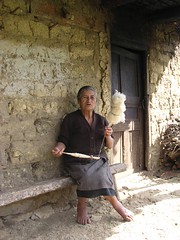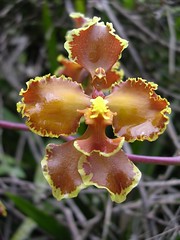We wake up early in the morning, our first unforgettable week in Peru ends with an incredible travel: towards the past, the sky, a hard but authentic present. The road that connects Chachapoyas to Cajamarca is a pebbly and dusty way, that vanishes inexorably swallowed by abandonment and nature. We join the procession of hundreds of campesinos who, in the day of the market, head towards the pueblo of Yerbabuena (Rio Utcubamba); trading on every available means of transporting (camiones, horses, bulls) or by foot. It rains and the damp confuses colors and flavors of the market, shouts and mud sketches. In this atmosphere the millenarian exchange between the products of the Altiplano and those of the forest happens. We continue towards the archaeological site of Revash, an interesting example of Chachapoya architecture. The road follows a splendid green valley until Leymebamba, where we visit the museum “Centro Mallqui”, approximately 200 Chachapoya mummies are guarded together with numerous finds discovered near the Laguna de los Condores. Now we go up firmly, the vegetation disappears and we reach an altitude of 4000 meters. We catch up the clouds and we enjoy an impressive horizon, during the sunset.
Quickly we return down, until we touch the waters of Rio Marañon, near the village called La Balsa (500 m.s.l). While we have dinner, the waitress tells us that various armed robberies recently took place along the road for Cendelin: a wearing discussion with our driver rises, but the decision is to continue. In the fog we reach the objective of the day (Cendelin), it’s late in the night. We all (Michael and Lukas, our travel companions, too) are exhausted. The following day we complete the distance from Cendelin to Cajamarca, hours and hours of up and down by bus again. A one-shot adventure, a travel in the most authentic Peru.



